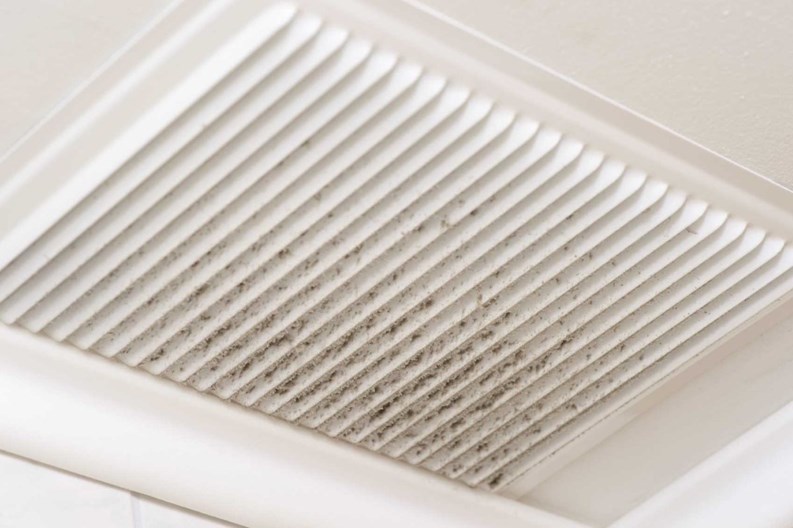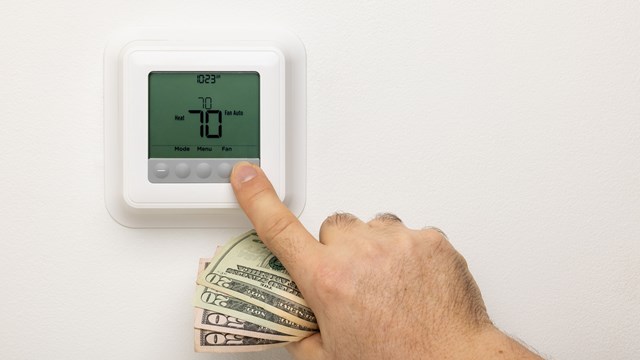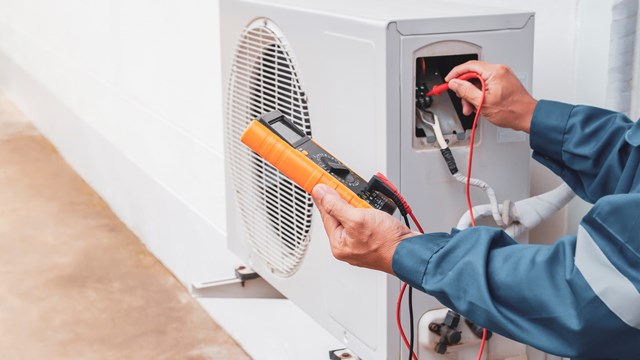As winter approaches, it will soon be time to batten down the hatches so the warm air stays in and the cold air stays out. Keeping indoor air clean is critical to maintaining a healthy environment. The inner workings of a building’s operating system is often a mystery to the untrained person or board member. What exists in the seemingly endless caverns of a building’s HVAC system, for example, can be surprising—from dead rodents and insects to various forms of dangerous mold.
Since it’s easier to determine the cleanliness of common rooms such as garbage and recycling areas, more attention is often paid to keeping these shared spaces sanitary. However, there are no federal or state guidelines that require a building to have its air ducts cleaned and these systems often need annual attention.
A recent Harvard study showed that 100 percent of homes tested for indoor air pollution had at least one air quality concern—and most had more than one. The following facts are not pleasant, but they underscore the potential health issues associated with poor indoor air quality. For example, it’s estimated that there can be as many as 42,000 dust mites living in every ounce of dust. On average, dust mites leave fecal droppings about 20 times a day. Add mold spores, pet dander and cigarette smoke to the environment and allergens increase exponentially.
“Indoor air is very different than outdoor air,” says Kristy Lee, technical director of Rockville, Maryland-based Indoor Environment Communications.. “Indoor air is not circulating or being refreshed so if there is any kind of problem in a building such as mold or dust or anything like that it becomes an irritant, gets worse and keeps getting circulated throughout the building.”
The Environmental Protection Agency (EPA) finds that there is not enough knowledge currently to determine whether or not air duct cleaning actually prevents health problems. Additionally, studies have not conclusively demonstrated that particulate levels in homes increase because of dirty air ducts. However, the EPA does state that “it makes no sense to clean duct-work if air handlers are left untouched. Air ducts deliver exactly what an air handler drives, and if the duct-work is dirty, so are the air handler’s guts.”
Poor Air Quality
“Air duct cleaning” is a general term because a complete cleaning of a heating, ventilation and air conditioning system (HVAC) means all components of the forced air system. So, often the first step is to understand options. Air duct cleaning, for example, means all duct-work, vents and grilles, essentially only those components that distribute airflow. Conversely, air handler or HVAC cleaning includes all of the heating and cooling machinery, but not the duct-work.
Maria Vizzi, president of the Bronx-based Indoor Environmental Solutions, Inc. says that the leading factors to poor indoor air quality include “city air, pollution, smoking and pets.” She added, “Recently we’ve found the biggest contributor to dirty duct-work and ventilation systems has been renovations.”
While it costs money to maintain a healthy HVAC unit and trash chute, not investing can cost more down the line both monetarily and physically. “Any system that is laden with dirt will not work to its full capacity. This goes for air ducts, the roof fans that serve the buildings ventilation system, dryer ventilation ducts or kitchen exhaust hoods,” says Vizzi. “People who have allergies tend to have a keen awareness and appreciation for cleaning these dirty systems, knowing that better indoor air quality can only serve to support their overall health. If our air ducts are the lungs of your home, it’s best to keep them cleaned and sanitized.”
Craig Berlin, owner of Chute Master Indoor Environmental Services, an air duct and chute-cleaning company based in New Jersey, agrees adding that “Proper cleaning of your air duct system will actually benefit the entire building from the lobby to the hallways, trash chute areas, the laundry rooms and especially the apartments themselves.” He continued. “If you let dust and debris to collect in the duct work it gives you two sizeable problems. One is restricted air flow. If the building can’t breathe properly and pull air though it you will get stagnant air. On top of that, the same substance will collect in the duct work and absorb odors.”
Finding the Right Company
Since every building is different, it is difficult to determine exactly how long it takes for debris build-up to occur in air ducts and chutes, explains Michael Sandler, president of the Brooklyn-based Nu-Way Scientific Compactor/Boiler.
“There is no one answer to this question but there is only a rule of thumb: approximately every eight to ten years, the air ventilation system should be cleaned, and approximately every year to a year-and-a-half, the refuse chute should be cleaned,” says Sandler. “This rule of thumb depends on specific factors and circumstances in the building.”
For many boards, pulling the trigger and hiring a cleaning company is often a last resort spurred by a resident or employee complaining of illness. Most often a building superintendent will conduct sight reviews of the system. The EPA states that “if after a visual inspection of the inside of the ducts, you see no indication that your air ducts are contaminated with large deposits of dust or mold (no musty odor or visible mold growth), having your air ducts cleaned is probably unnecessary.”
Finding the right company is an equal challenge as there are many fly-by-night companies known for doing substandard jobs and often making matters worse. Any company operating without certification from the National Air Duct Cleaners Association (NADCA) should be considered suspect.
“To be certified by the NADCA, a company has to pass written tests and have continuing education on an annual basis. What this does is provide a level of assurance and quality a customer can expect,” says Berlin.
As a way to confront scam artists, NADCA teamed with undercover investigator Chris Hansen and Dateline NBC to expose fraudulent companies. “These scams are a problem for consumers and legitimate businesses alike. The low-price coupons offered by these bad actors make it difficult for consumers to know what to expect, while also luring business away from legitimate companies. Consumers often end up paying more than necessary without getting their money’s worth,” said NADCA executive director John Schulte.
NADCA recommends that commercial consumers ask the following questions: If there is any remediation of mold or other biological contamination does the company have a Ventilation System Mold Remediator (VSMR) on staff? Will the company be assigning an Air Systems Cleaning Specialist (ASCS) to your project that will be responsible for the complete project? Will the contractor provide you with a means to conduct a visual inspection at any time during the cleaning (mirror and flashlight, camera or other remote visual systems)?
Best Practices?
Sandler explains that his company’s approach is to clean the air ducts and chutes from the top down. “First we clean the roof fan and riser. Then, access must be gained to each apartment to remove and clean the register covers using an enzyme solution. Next, a powerful HEPA-vacuum and Roto-brush are used to clean the duct work before replacing the cleaned register covers,” he continued. “Refuse chute cleaning is done through the hopper doors. The chute is sprayed with an enzyme solution to break down residue on the walls of the chute. The hopper door is then scraped clean. Next, we scrape and power wash the chute. Finally, the inside of the compactor itself is cleaned.”
Pricing also runs the spectrum depending on respective variables, notes Sandler. “Air ventilator cleaning is charged per apartment. The current rate is $65.00 per apartment but it can vary depending on the building. Refuse chute cleaning is charged per floor,” he says. “The current rate is $75.00 per floor but it also varies depending on the size of the building.”
Applying a timetable to duct and chute cleaning is difficult as it depends on the number of units in the building and the condition of the existing environment, explains Vizzi. Air vent cleaning of approximately 25 to 30 can be completed in one day depending on availability and access to residents’ dwellings. Roof fans and risers can take multiple days while chute cleaning for a twenty-five story building can be tackled in one day.
All buildings, but especially high-rises, have issues with trash chutes. While recommended to clean them at least once a year, depending on use, problems can arise more frequently. “The chutes have to be cleaned for a variety of reasons. First is safety. Residents throw down flammables, paint thinner, paint and other items that are not appropriate for the trash chute,” says Berlin. “Another issue is vanity and the odors that emanate from the trash room as well as from the chute that goes in to the hallways and then into apartments leading to tenant unrest.”
Sandler adds. “A newer metal chute, if not cleaned, will begin to emit odors in the building over time. An older fire brick chute can be even more of an issue. When the refuse builds up, rodents and insects begin to nest within the compactor refuse chute giving them a safe area from the exterminator.”
The majority of Sandler and Vizzi’s clients do not have services on retainer. From a board’s perspective there are pros and cons to this approach. With budgets tightening, it is a way to satisfy the bottom line but preventing possible mounting health issues should be an equal concern.
“The benefit of being on retainer and coming automatically is that this project becomes part of the regular building maintenance and doesn’t get overlooked,” says Vizzi. “Let's face it, with all that a property manager has to deal with; this project may not always be top of mind. Yet most thankfully they do understand it is important to stay on top of it.”
Poor indoor air quality can be responsible for everything from eye irritation to throat dryness and itchy skin to chronic sinusitis and asthma. So it makes sense to adhere to a preventative maintenance schedule for your air ducts and vents, if not only to save energy, but to help all your residents breathe a little easier when they get home.
W.B. King is a freelance writer and a frequent contributor to The Cooperator.










2 Comments
Leave a Comment